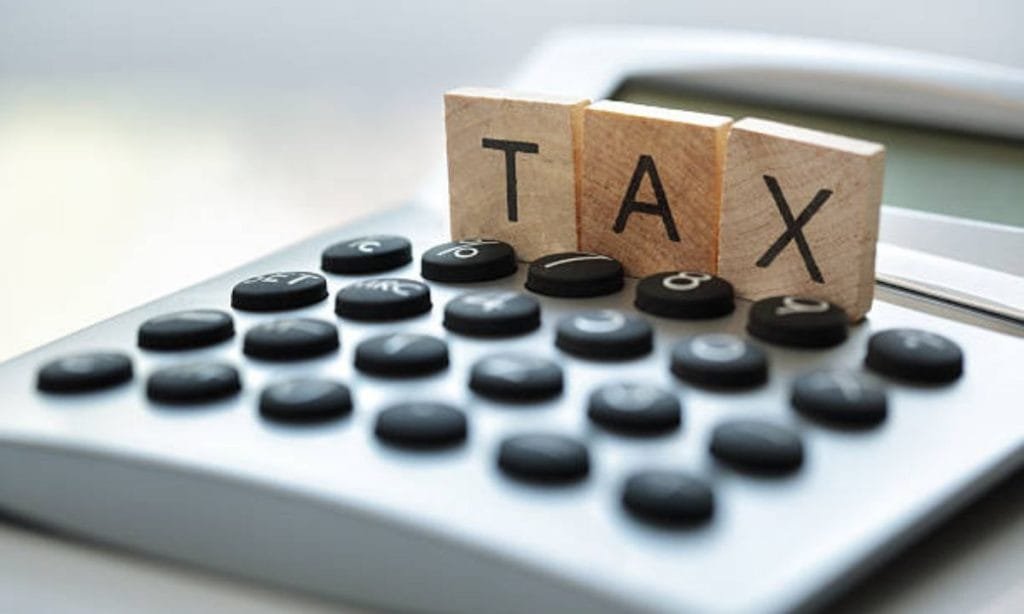Income tax enjoys a significant status as one of the government’s major revenues. It is very important to know how one is qualified to pay his income tax to respect his obligations to the nation.
The procedure for income tax computation in Bangladesh can be said to be, to a certain extent, complicated. This is so because, as has already been said, everyone looks the taxation question straight in the face, mainly the income tax. When hearing about this, people’s primary feeling is fear, especially of those individuals who have their salaries.
If you are missing this information, you will either pay more or less tax than you should. You should thus understand the basic terms and how you are likely to compute the amount of income tax imposed on you. This article will be used as a guideline to let you know how to calculate your income tax for FY 2023–24 in Bangladesh.
What is meant by Income Tax in Bangladesh?
The Income Tax Act of 1961 makes it mandatory for every salaried individual to pay an amount to the country in the form of tax. This amount of tax is called income tax. Various amendments and variations in the law describe the details of tax payments, deductions, and computations. The amount left over after all the tax-saving provisions and deductions is given to the government as income tax. If you’re uncertain about the latest income tax structure, you can refer to the New Income Tax Slab in Bangladesh for the most up-to-date information.
What is the income tax policy in Bangladesh?
Bangladesh adopts a progressive taxation rate on personal income (for residents with presence in Bangladesh: i) for 182 days or more in one fiscal year or ii) for 90 days or more in one fiscal year iii) 365 days or more in the preceding 4 years), which ranges from 0% to 25% (surcharge is payable by wealthy individuals). The personal income tax rate is to be determined by the Finance Act every fiscal year. Following are the existing rates of personal income tax:

First up to 300000 BDT, there is no tax, the next 100000 at 5% of the amount, the next 300000 at 10%, the next 400000 at 15%, and the next 500000 at 20% Any amount above this 25% of the amount is deducted Such investors are allowed a tax credits. If you’re a business owner, it might also be relevant to know How to Get a BIN Number in Bangladesh, as it’s essential for tax-related activities.
Income Tax Calculator in Bangladesh
Understanding the tax calculation process can be complex, but we’ve made it easier for you. Use the interactive tax calculator below to determine your income tax based on your monthly salary. Simply enter your monthly salary, and the calculator will do the rest.
Tax Calculation Results:
Annual Salary: BDT
Tax-Free Amount: BDT
Tax on 2nd Slab: BDT
Tax on 3rd Slab: BDT
Total Tax Payable: BDT
This tool will help you accurately calculate your tax payable based on the income tax slabs for the fiscal year 2023–24. Whether you have a simple salary structure or a more complex one with bonuses and allowances, this calculator will give you a clear idea of your tax obligations.
Income Tax Slabs for the Fiscal Year 2023–24 for Employees
Possibly, you will be able to obtain your organization’s present fiscal year wage from the human resources or finance directorate. This statement will give you detailed earnings.

How Do You Calculate the Tax on a Salary?
Let us now learn more specifically from the understanding of income tax as to how you can work out income tax on salary.
- Basic Salary: This is your regular monthly wage or base income.
- House Rent Allowance: If you receive this, it covers your housing expenditures.
- Conveyance Allowance: This covers your commuting expenses.
- Medical Allowance: This is for your medical expenses.
- Bonuses: Bonuses may include performance bonuses, yearly bonuses, or festival bonuses.
- Leave Encashment: When you receive money in exchange for unused leave days.
- Overtime Allowance: Any additional money for working beyond the scheduled hours.
- Transportation Allowance: To cover additional travel expenditures.
- Advance Income Tax (AIT): If taxes have been deducted at the source.
To correctly calculate your taxes, you must also ensure that you have the necessary documentation, such as your e-TIN Certificate, which is essential for tax submissions.
The following analysis of your salary statement reveals how your wages are divided into several parts.
| Particulars | Payment | Total |
| Basic | 600,000 | 600,000 |
| House Rent | 360,000 | 360,000 |
| Conveyance | 180,000 | 180,000 |
| Medical Allowance | 60,000 | 60,000 |
| Leave Encashment | 10,000 | 10,000 |
| Performance Bonus | 50,000 | 50,000 |
| Yearly Bonus | 100,000 | 100,000 |
| Festival Bonus | 20,000 | 20,000 |
| Over Time Allowance | 10,000 | 10,000 |
| Transportation | 10,000 | 10,000 |
| Total Gross Pay | 1,400,000 | 1,400,000 |
| AIT | 18,000 | 18,000 |
| Net pay | 1,382,000 | 1,382,000 |
This table shows every component that a person can be paid: the employee’s base pay, any extra amount that he or she is due for, as well as any kind of bonus. Total gross pay refers to the total pay given without taking into account any tax that has been paid. This is the net salary, which is arrived at after they have deducted the Advance Income Tax (AIT). In this case, the client gets 13,82,000–18,000 for AIT from the amounts earned of 1,400,000.
Total Earning: You earned a total income of 1,400,000.
1/3 of Total Earning: This is one-third of your total earnings, which equals 466,667.
Maximum Tax-Free Income: According to tax rules, the maximum income that is not subject to tax is 450,000.
Tax-Free Income: Tax-free income is calculated as the lesser of one-third of your total earnings (466,667) and the maximum tax-free income (450,000). In this case, it’s 450,000, which is the lowest amount.
Taxable Income: Your taxable income is found by subtracting your tax-free income (450,000) from your total earnings (1,400,000). So, your taxable income is 950,000.
Total Investment: You have a total of 800,000 in investments. These investments may have tax implications and could potentially reduce your taxable income or provide tax benefits depending on the tax laws in your area.
In total, you earned 1,400,000, but 450,000 of those earnings do not require payment of taxes. As such, the taxable income is 950,000.
Income Tax Slabs
| Slab | Amount | Rate | Amount | Rest |
| 1st | 350,000 | 0% | 0 | 600,000 |
| 2nd | 100,000 | 5% | 5,000 | 500,000 |
| 3rd | 300,000 | 10% | 30,000 | 200,000 |
| 4th | 400,000 | 15% | 30,000 | 0 |
| 5th | 500,000 | 20% | 0 | 0 |
| Rest Amount | 25% | 0 | 0 |
Think of these as different buckets that categorize your income. Each bucket has a specific tax rate.
1st Slab: In that category, for example, if your income is 350,000 or less, then you are not required to pay any tax; it is a tax-free income. But if you are making more than 350,000 you will only be taxed on top of this amount. Thus, the first 350000 of income is free of taxes, and the next 600000, is not charged with taxes either.
2nd Slab: In the range of 350 001 to 500,000 you are required to pay 5% but this is paid on the income over 350 000. For Instance, If your income is 450,000, the 100,000 above 350,000 would attract a 5% tax of 5,000.
3rd Slab: Incomes between 500,001 and 800,000 are taxed at a 10% rate on the amount exceeding 500,000. For example, if you fall into this range, you pay 10% on the portion above 500,000. In this example, the tax on income between 500,001 and 800,000 is 30,000.
4th Slab: For incomes from 800,001 to 1,200,000, you pay 15% tax, but only on the money over 800,000. In this example, the tax is 15% on the income exceeding 800,000, resulting in 30,000.
5th Slab: If your income is between 1,200,001 and 1,700,000, you pay a 20% tax, but just on the amount over 1,200,000. In this example, no tax is calculated for this category.
Rest Amount: If your income goes beyond 1,700,000, it will be taxed at a 25% rate. However, in this example, no tax is calculated for this portion.
Rebate Calculation
- 3% of Taxable Income: This means you get back 3% of your taxable income, which is 28,500 in this case.
- Investments’ 15%: If you’ve invested money, you get a rebate of 15% of your total investment, which is 120,000 here.
- 10,00,000 BDT: This amount is part of the calculation.
Lowest: You choose the smallest rebate value, which is 28,500 in this example.
Advance Income Tax: You’ve already paid 18,000 in Advance Income Tax.
Total Rebate: To find the total rebate, add the lowest rebate (28,500) to the Advance Income Tax (18,000). This equals a total rebate of 46,500.
Net Tax: To find your final tax amount, subtract the total rebate (46,500) from the initial tax (65,000). So, 65,000–46,500 equals a net tax of 18,000.
Additionally, if you’re in the process of filing taxes, it’s crucial to understand How to Submit Tax Returns in Bangladesh to ensure you comply with all legal obligations.
Tax Calculation Example for a Monthly Salary of 50,000 BDT
Let’s consider a scenario where a person in Bangladesh has a monthly salary of 50,000 BDT. This would make their annual income:

- Annual Salary: 50,000 BDT x 12 months = 600,000 BDT
Now, let’s break down the components of their salary:
- Basic Salary: 600,000 BDT (since there are no allowances or bonuses mentioned in this case).
According to the income tax slabs for the fiscal year 2023–24:
- 1st Slab: Up to 350,000 BDT is tax-free.
- 2nd Slab: The next 100,000 BDT is taxed at 5%.
- 3rd Slab: The remaining 150,000 BDT is taxed at 10%.
Now, let’s calculate the tax:
- Tax on the 1st Slab:
- Taxable Income: 600,000 BDT – 350,000 BDT = 250,000 BDT
- Tax: 0 BDT (as the first 350,000 BDT is tax-free)
- Tax on the 2nd Slab:
- Taxable Income: 100,000 BDT
- Tax: 5% of 100,000 BDT = 5,000 BDT
- Tax on the 3rd Slab:
- Taxable Income: 150,000 BDT
- Tax: 10% of 150,000 BDT = 15,000 BDT
- Total Tax:
- Tax = 5,000 BDT (2nd Slab) + 15,000 BDT (3rd Slab) = 20,000 BDT
Since no Advance Income Tax (AIT) or other deductions are mentioned, the total tax payable for this person would be 20,000 BDT for the fiscal year.
This simplified example helps illustrate how income tax is calculated for a salaried individual in Bangladesh. However, if the person has any investments, allowances, or bonuses, those would need to be factored into the calculation, potentially altering the final tax amount.
Read also- How to Avoid VAT Ethically in Bangladesh?
Conclusion
All investments should be declared at the beginning of the assessment year if the correct tax is to be determined. To ensure that every person has a good background in taxes, deductions, and returns, this knowledge is important in creating a good financial base.
The ability to calculate and deduct comes in handy regarding money investments and tax implications, enabling one to live an esteemed lifestyle. It also shields you against cases of tax fraud.
Legal Advice BD is ready to help you avoid the problems of paying taxes and dealing with procedures! Our income tax lawyer in Bangladesh is unrivaled in terms of dealing with tax-related concerns.
So you may be confident that we will give you the greatest service and the best lawyer in Dhaka. Check our services where we may offer you regarding your tax concerns.

